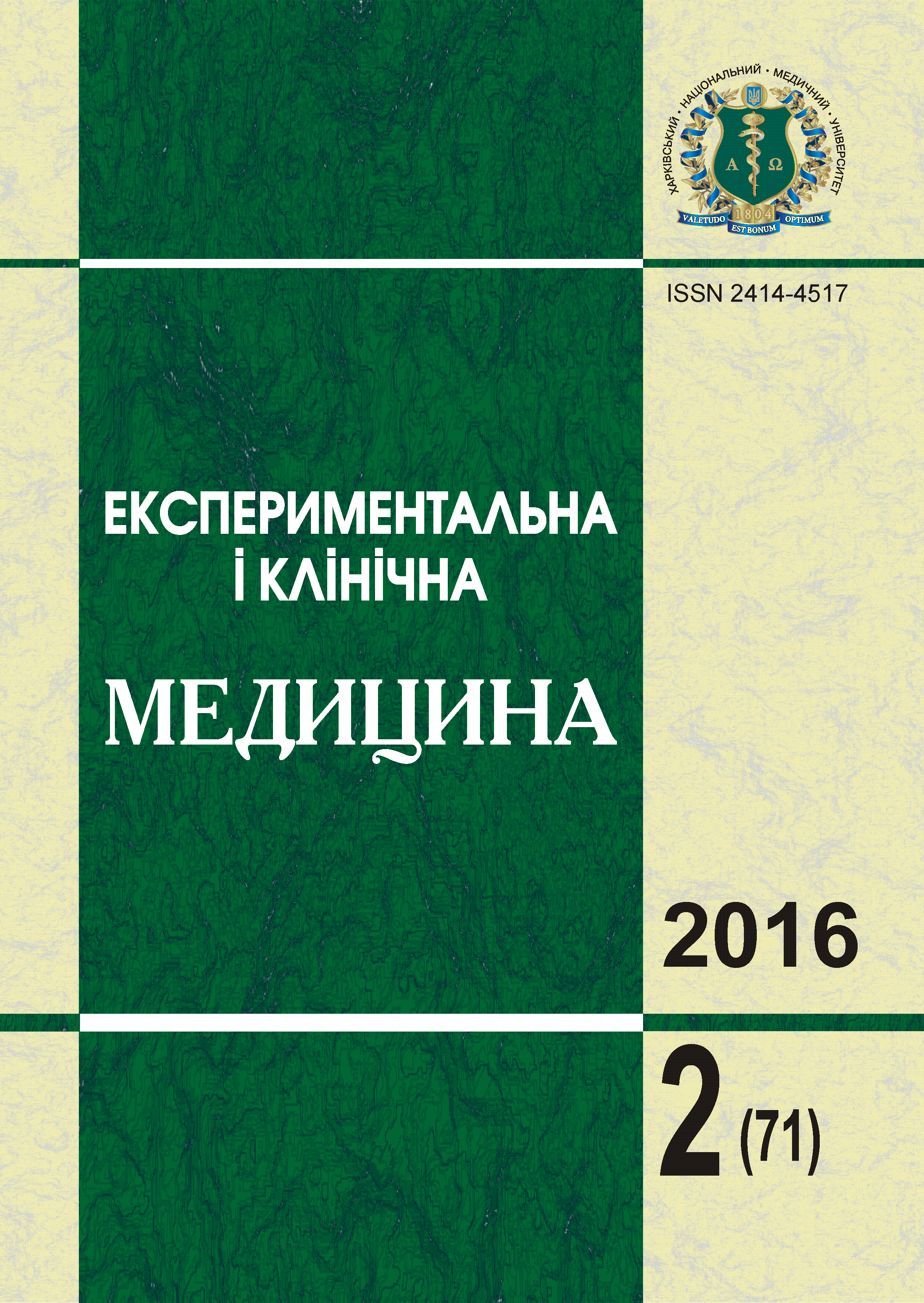Abstract
The study was conducted on nonpubertal (aged 5–6 weeks) outbred male white rats weighing 65–75 g, pre-selected for medium resistance to hypoxia. Acute hypoxia was simulated by «lifting» the animals to the «height» of 12,000 m. The rats were kept on the «high-altitude plateau» to the reverse respiratory standstill, then a «descent» to the previous zero height was done. Melatonin and dipyridamole were administered intraperitoneally at doses of 1 and 5 mg per 1 kg of body weight respectively 30 minutes before hypoxia was simulated. Neuroprotective effects of melatonin and dipyridamole in acute hypoxia were evaluated by the indices of intensity of lipid and protein peroxidation, as well as by the activity of enzyme marker of neuronal plasma membranes (Na+, K+-ATPhase) in the brain of rats. It was established that the use of dipyridamole against the background of melatonin administration in acute hypoxia potentiates antioxidant effects of melatonin for the formation of products of lipid peroxidation (malondialdehyde) and of protein peroxidation (especially basic character products).References
Лукьянова Л.Д. Энерготропное, антигипоксическое и антиоксидантное действие флавоноидов / Л.Д. Лукьянова, Э.Л. Германова, А.И. Лыско // Вестник РАМН. – 2007. – № 2. – С. 55–61.
Reiter R.J. Melatonin: a novel protective agent against oxidative injury of the ischemic/reperfused heart / R.J. Reiter, D.X. Tan // Cardiovasc Res. – 2003. – Vol. 58, № 1. – P. 10–19.
Reiter R.J. Melatonin: exceeding expectations / R.J. Reiter, D.X. Tan, A. Galano // Physiology (Bethesda). – 2014. – Vol. 29, № 5. – P. 325–333.
Melatonin: a peroxyl radical scavenger more effective than vitamin E / C. Pieri, M. Marra, F. Moroni, et al. // Life Sci. – 1994. – Vol. 55, № 15. – P. PL271–PL276.
Melatonin as a potent and inducible endogenous antioxidant: synthesis and metabolism / D.X. Tan, L.C. Manchester, E. Esteban-Zubero, et al. // Molecules. – 2015. – Vol. 20, № 10. – P. 18886–18906.
Sánchez A. Evaluating the oxidative stress in inflammation: role of melatonin / A. Sánchez, A.C. Calpena, B. Clares // Int. J. Mol. Sci. – 2015. – Vol. 16, № 8. – P. 16981–17004.
Naseem M. Role of melatonin in traumatic brain injury and spinal cord injury / M. Naseem, S. Parvez // Scientific World J. – 2014. – Vol. 2014. – Article ID 586270, 13 p. doi: 10.1155/2014/586270
Watson N. Melatonin as an antioxidant for stroke neuroprotection /
N. Watson, T. Diamandis, C. Gonzales-Portillo, et al. // Cell Transplant. – 2016. – Vol. 25, № 5. – P. 883–891.
Melatonin restores the cytochrome oxidase reactivity in the nodose ganglia of acute hypoxic rats / H.M. Chang, C.Y. Tseng, I.H. Wei, et al. // J. Pineal Res. – 2005. – Vol. 39, № 2. – P. 206–214.
Суфианова Г.З. Нейропротекторное действие агонистов аденозиновых рецепторов при фокальных ишемических и травматических повреждениях ЦНС: автореф. дис. … докт. мед. наук / Г.З. Суфианова. – С.-Петербург, 2003. – 419 с.
Adenosine A1 and A3 receptors protect astrocytes from hypoxic damage / O. Björklund, M. Shang, I. Tonazzini, et al. // Eur. J. Pharmacol. – 2008. – Vol. 596. – P. 6–13.
Dipyridamole monotherapy in schizophrenia: pilot of a novel treatment approach by modulation of purinergic signaling / I. Wonodi, H.V. Gopinath, J. Liu, et al. // Psychopharmacology (Berl). – 2011. – Vol. 218, № 2. – P. 341–345.
Березовский В.А. Гипоксия и индивидуальные особенности реактивности / В.А. Березовский. – К.: Наук. думка, 1978. – 216 с.
Directive 2010/63/EU of the European Parliament and of the Council of 22 September 2010 on the protection of animals used for scientific purposes. Text with EEA relevance // O. J. L 276. – Vol. 53, 20.10.2010. – P. 33–79.
Арутюнян А.В. Методы оценки свободнорадикального окисления и антиоксидантной системы организма: метод. рекомендации / А.В. Арутюнян, Е.Е. Дубинина, Н.Н. Зыбина. – СПб.: Фолиант, 2000. – 53 с.
Мещишен І.Ф. Метод визначення окислювальної модифікації білків плазми (сироватки) крові / І.Ф. Мещишен // Буковинськ. мед. вісник. – 1998. – Т. 2, № 1. – С. 156–158.
Капля А.А. Структурная организация изоферментов Na+, K+ ATPФазы в плазматической мембране / А.А. Капля // Укр. биохим. журн. – 1997. – Т. 69, № 5–6. – С. 12–24.
Israelsson B. Changes in adenylate cyclase and 5’ nucleotidase activities in liver membranes from alloxan diabetic rats / B. Israelsson, I. Tengrup // Experientia. – 1980. – Vol. 36, № 2. – P. 257–258.
Robinson J.D. Interaction between monovalent cations and the (Na+-K+)-dependent adenosine triphosphatase / J.D. Robinson // Arch. Biochem. and Biophys. – 1970. – Vol. 139, № 1. – P. 17–27.
Fiske S. The colorimetric determination of phosphorus / S. Fiske, J. Subbarow // J. Biol. Chem. – 1925. – Vol. 66, № 7. – P. 375–400.
Protein measurement with the Folin phenol reagent / O.H. Lowry, N.J. Rosenbrough, A.L. Farr, R.J. Randall // J. Biol. Chem. – 1951. – Vol. 193, № 1. – P. 265–275.
Лелевич В.В. Особенности энергетического обмена в ткани головного мозга / В.В. Лелевич // Весці АН Беларусі. Сер. біял. навук. – 1996. – № 2. – С. 113–119.
Shagirtha K. Melatonin abrogates cadmium induced oxidative stress related neurotoxicity in rats / K. Shagirtha, M. Muthumani, S.M. Prabu // Eur. Rev. Med. Pharmacol. Sci. – 2011. – Vol. 15, № 9. – P. 1039–1050.
Mechanisms of melatonin-induced protection in the brain of late gestation fetal sheep in response to hypoxia / T. Yawno, M. Castillo-Melendez, G. Jenkin, et al. // Dev. Neurosci. – 2012. – Vol. 34, № 6. – P. 543–551.
Tan D.-X. Ebola virus disease: potential use of melatonin as a treatment / D.-X. Tan, A. Korkmaz, R.J. Reiter, et al. // J. Pineal Res. – 2014. – Vol. 57, № 4. – P. 381–384.
